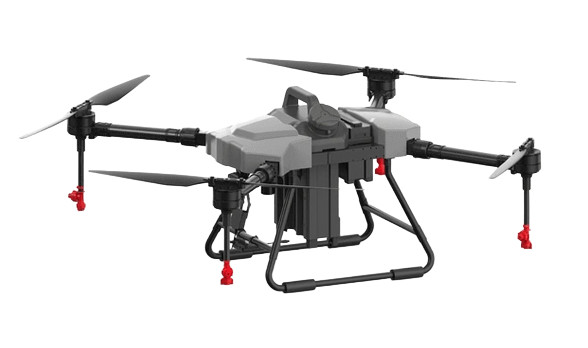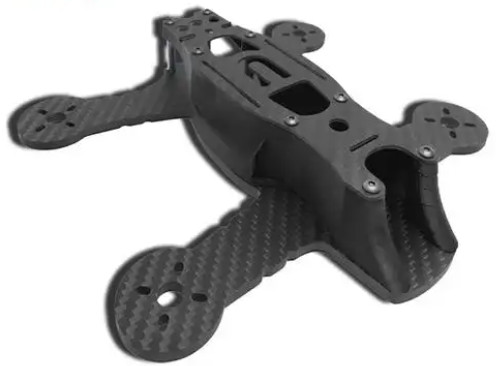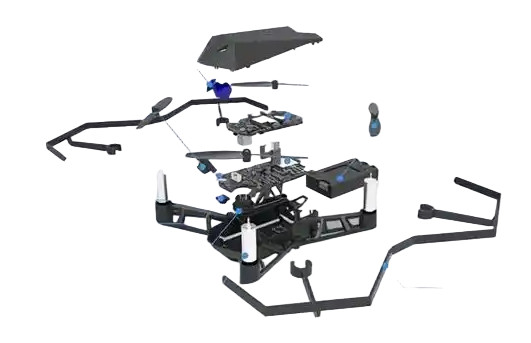Unmanned Aerial Vehicles (UAVs), or drones, are engineered systems designed to meet requirements for lightweight construction, high strength, stability, and mission adaptability. The structure of a UAV varies depending on its type—multirotor, fixed-wing, or vertical takeoff and landing (VTOL)—but all share core components. This article provides a detailed, technical overview of UAV structural components, including airframe, propulsion system, landing gear, payload system, avionics bay, control surfaces, and structural reinforcements, with specific parameters to ensure clarity and precision.
Airframe Design
The airframe is the foundational structure of a UAV, serving as the skeleton that supports all components while withstanding aerodynamic and mechanical loads during flight. It must balance lightweight design with durability, using materials such as carbon fiber composites, aluminum alloys, or engineering plastics. Manufacturing methods include CNC machining for precision or 3D printing for rapid prototyping.
Multirotor UAVs feature a central frame and arms extending to support rotors. A typical quadcopter frame has a diagonal size of 0.3–1 meter, with arms measuring 15–30 cm in length. Fixed-wing UAVs include a fuselage (0.5–2 meters long for small drones), wings (wingspan of 1.5–3 meters), and a tail section for stability. VTOL UAVs combine elements of both, with a fuselage and wings plus additional rotor mounts. Material selection impacts weight and strength; for example, carbon fiber has a tensile strength of 3,500–6,000 MPa, while aluminum alloys range from 200–600 MPa.
| UAV Type | Component | Typical Dimensions | Material |
|---|---|---|---|
| Multirotor | Central Frame, Arms | Diagonal: 0.3–1 m | Carbon Fiber, Plastic |
| Fixed-Wing | Fuselage, Wings | Wingspan: 1.5–3 m | Carbon Fiber, Aluminum |

Propulsion System
The propulsion system generates the thrust necessary for flight and maneuverability. It comprises motors, propellers or rotors, motor mounts, and electronic speed controllers (ESCs). Multirotor UAVs typically use brushless DC motors with power ratings of 100–500 watts, producing 1–5 kg of thrust per motor. Fixed-wing UAVs may employ piston engines (5–20 hp for small drones) or electric motors, while VTOL systems integrate both.
Propellers are selected based on diameter and pitch; a 10-inch propeller with a 4.5-inch pitch is common for quadcopters, providing efficient lift. Motor mounts secure motors to the airframe, incorporating vibration-damping materials like rubber or silicone to reduce sensor interference. ESCs regulate motor speed, handling currents of 20–50 amps for small UAVs, with response times under 10 ms for precise control.
Landing Gear
Landing gear supports the UAV during takeoff, landing, and ground operations. It is categorized as fixed or retractable. Multirotor UAVs often use simple struts or skids, typically 10–20 cm in height, made of lightweight materials like carbon fiber or plastic. Fixed-wing UAVs may feature wheel-based landing gear for runway operations or pontoons for water landings, with wheel diameters of 5–15 cm for small drones. Retractable landing gear, common in larger fixed-wing or VTOL UAVs, reduces drag during flight, using servo motors for retraction.
The landing gear must absorb impact loads, typically designed to withstand forces of 2–3 times the UAV’s weight (e.g., 5–15 kg for a 2.5 kg drone). Proper weight distribution is critical to avoid tipping during landing, especially for multirotors with uneven payloads.
Payload System
The payload system supports mission-specific equipment, such as cameras, sensors, or delivery mechanisms, tailored to applications like aerial photography, mapping, agriculture, or logistics. Key components include gimbals, mounting plates, and payload bays.
Gimbals stabilize cameras or sensors, using 2- or 3-axis stabilization to counter vibrations and maintain orientation within ±0.1°. Mounting plates secure equipment like high-resolution cameras (12–48 MP, 200–500 g) or LiDAR sensors (range accuracy ±2 cm, 500–1,500 g). Payload bays accommodate cargo or specialized instruments, such as agricultural sprayers with 5–10 L tanks. Payload integration must consider power consumption (e.g., 10–20 watts for LiDAR) and weight distribution to maintain flight stability.
Avionics Bay
The avionics bay houses critical electronic systems, including the flight controller, GPS module, battery compartment, and communication modules. The flight controller, often a microcontroller like Pixhawk, processes sensor data at 400 Hz and supports autonomous navigation via firmware like Ardupilot. GPS modules provide positioning accuracy of 2–5 meters, enhanced by EGNOS or RTK corrections to ±10 cm.
The battery compartment secures lithium-polymer (LiPo) batteries, typically 3,000–6,000 mAh at 11.1–22.2 volts, with thermal management to prevent overheating (safe operating range: 0–45°C). Communication modules, operating at 2.4 GHz or 5.8 GHz, ensure data links with ranges of 1–10 km, using antennas mounted on dedicated brackets for optimal signal strength.
Control Surfaces
Control surfaces are primarily used in fixed-wing and VTOL UAVs to adjust flight attitude. These include ailerons (roll control, typically 10–20% of wing chord), elevators (pitch control, 15–25% of tail surface), rudders (yaw control, 20–30% of vertical stabilizer area), and flaps (increase lift during takeoff/landing, extending 20–40% of wing trailing edge). Servo motors actuate these surfaces, with torque ratings of 5–15 kg·cm for small UAVs.
Control surface design affects aerodynamic performance. For example, a fixed-wing UAV with a 2-meter wingspan may require ailerons with a deflection range of ±20° to achieve a roll rate of 60°/s. Multirotor UAVs rely on differential rotor speeds instead of control surfaces for attitude control.
Structural Reinforcements
Structural reinforcements enhance the UAV’s durability at critical stress points, such as arm-to-frame connections or payload mounting areas. Components include ribs (supporting wing or fuselage structures), brackets (securing motors or landing gear), and clips (fastening cables or sensors). These are typically made of carbon fiber or aluminum, with thicknesses of 1–3 mm to balance weight and strength.
For example, a quadcopter’s arm connections may use aluminum brackets to withstand shear forces of 50–100 N during high-speed maneuvers. Reinforcements prevent deformation or failure, particularly under payloads exceeding 20% of the UAV’s maximum takeoff weight (MTOW).
| Reinforcement Type | Material | Application | Load Capacity |
|---|---|---|---|
| Bracket | Aluminum | Motor, Landing Gear | 50–100 N |
| Rib | Carbon Fiber | Wing, Fuselage | 100–200 N |
Design Optimization for Applications
UAV structures are tailored to specific applications. Multirotor UAVs prioritize maneuverability and hover stability for tasks like aerial photography or inspections, with compact frames and high-thrust motors. Fixed-wing UAVs focus on endurance and efficiency for surveillance or mapping, with streamlined fuselages and high lift-to-drag ratios (10:1 or higher). VTOL UAVs combine both, using hybrid structures for versatile missions like logistics.
For example, an agricultural UAV may integrate a 10 L payload bay and reinforced arms to support sprayer weight, while a military UAV emphasizes stealth with low-radar-cross-section materials. Structural design ensures compatibility with mission requirements, such as a 20-minute hover for photography or a 100 km range for surveying.
Assembly and Manufacturing
Assembly integrates all components into a cohesive system, starting with airframe construction, followed by motor, propeller, and avionics installation. Precision alignment is critical; for instance, motor misalignment by 1° can reduce thrust efficiency by 2–5%. Manufacturing uses CNC machining for metal parts, 3D printing for prototypes, or injection molding for mass production. Quality control verifies specifications, such as motor KV ratings (800–1,200 KV) or battery voltage tolerances (±0.1V).

Testing and Validation
UAVs undergo extensive testing to ensure structural integrity and performance. Tests include hover stability (±10 cm accuracy), payload capacity (e.g., 1–5 kg), and environmental resilience (wind speeds of 5–10 m/s). Flight controllers are validated for sensor accuracy (e.g., IMU orientation ±0.1°) and communication reliability (latency <100 ms). A typical test suite involves 50–100 flight cycles to detect issues like motor overheating or frame stress.
Regulatory Compliance
Structural designs must adhere to regulations, such as FAA or ICAO standards, which may limit MTOW to 25 kg for small UAVs or mandate redundant systems for safety. Compliance ensures safe airspace integration, particularly for commercial or military applications.
